
Death at the Opera is a 1934 mystery detective novel by the British writer Gladys Mitchell. It was the fifth novel in her series featuring the psychoanalyst and amateur detective Mrs Bradley. It was published in the United States under the alternative title of Death in the Wet.

Mist on the Saltings is a 1933 mystery thriller novel by the British writer Henry Wade. It marked a change in Wade's work, part of the Golden Age of Detective Fiction, with a shift toward more realistic character development and a favouring of accurate police procedural methods over the puzzle elements compared to his earlier novels. Celebrated crime novelist Dorothy L. Sayers wrote a review of the novel for the Sunday Times.

The High Sheriff is a 1937 mystery detective novel by the British writer Henry Wade. Wade was a writer of the Golden Age of Detective Fiction, best known for his series featuring Inspector Poole. This was one of a number of stand-alone novels he wrote, structured as a partially inverted detective story.

The Bell of Death is a 1939 mystery detective novel by Anthony Gilbert, the pen name of British writer Lucy Beatrice Malleson. It is the sixth in her long-running series featuring the unscrupulous London lawyer and detective Arthur Crook. It was published during the Golden Age of Detective Fiction. Reviewing it for the Times Literary Supplement, Maurice Percy Ashley commented "as usual with Mr. Gilbert’s stories this is exciting and well written, but it is so complicated that the reader can do little more than hold his breath".
Lynn Brock (1877-1943) was the pseudonym of the Irish writer Alister McAllister, who moved to England and wrote a series of mystery novels. Brock is best known for his series of Colonel Gore detective novels, which enjoyed popularity in the 1920s and 1930s during the Golden Age of Detective Fiction. His novels employ a complexity of style and are generally set in rural locations. He also wrote several plays under the name Anthony Wharton.

The Kink is a 1927 mystery detective novel by the Irish-born writer Lynn Brock. It was the third novel in his series featuring the character of Colonel Wyckham Gore, one of many investigators active during the Golden Age of Detective Fiction. It is sometimes referred to as Colonel Gore’s Third Case. The novel is noted for being comparatively sexually explicit for the era. Dashiell Hammett wrote a contemporary negative review of the book in The Saturday Review.
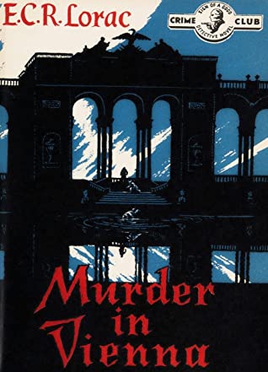
Murder in Vienna is a 1956 detective novel by E.C.R. Lorac, the pen name of the British writer Edith Caroline Rivett. It is the forty second in her long-running series featuring Chief Inspector MacDonald of Scotland Yard, one of the more conventional detectives of the Golden Age of Detective Fiction. It has an unusual foreign setting, post-war Vienna still occupied by the Allies, compared to the rest of the series which generally takes place in London or the English countryside. Maurice Richardson reviewing the novel for The Observer described it as the "usual solid job".

The Organ Speaks is a 1935 detective novel by E.C.R. Lorac, the pen name of the British writer Edith Caroline Rivett. It is the eighth book featuring Chief Inspector MacDonald of Scotland Yard who appeared in a lengthy series of novels during the Golden Age of Detective Fiction.

Up the Garden Path is a 1949 detective novel by John Rhode, the pen name of the British writer Cecil Street. It is the forty ninth in his long-running series of novels featuring Lancelot Priestley, a Golden Age armchair detective. It was published in America by Dodd Mead under the alternative title The Fatal Garden. Reviewing the novel in The Observer, Maurice Richardson concluded "Mr. Rhode has lost very little of his grip."

Death Invades the Meeting is a 1944 detective novel by John Rhode, the pen name of the British writer Cecil Street. It is the thirty ninth in his long-running series of novels featuring Lancelot Priestley, a Golden Age armchair detective. Reviewing the novel for the Times Literary Supplement Maurice Willson Disher noted "His ingenuity is becoming as delicate to handle as high explosive. His stories may become so difficult to review without saying too much that his triumph will come when they cannot, for discretion’s sake, be reviewed at all."
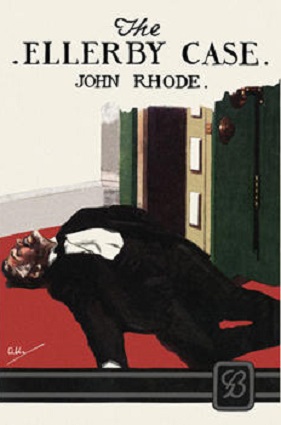
The Ellerby Case is a 1927 detective novel by John Rhode, the pen name of the British writer Cecil Street. It marked the third appearance of the armchair detective Lancelot Priestley, who featured in a long-running series of novels during the Golden Age of Detective Fiction. The novel's success led to a contract with Dodd Mead to release it and subsequent novels in the United States, in what proved to be a lucrative arrangement for the author.
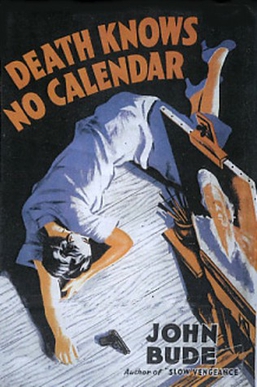
Death Knows No Calendar is a 1942 detective novel by the British writer John Bude. It was a stand-alone novel rather than one featuring his regular detective Superintendent Meredith. In this case the investigation is led by a former army officer Major Boddy. It takes the former of a locked room mystery with a closed circle of suspects, both popular variations of the genre during the period. Originally published by Cassell, in 2020 it was reissued by the British Library Publishing in a single edition with another Bude novel Death in White Pyjamas, as part of a series of republished crime novels from the Golden Age of Detective Fiction.
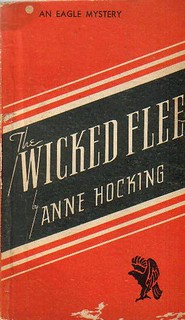
The Wicked Flee is a 1940 mystery crime novel by the British writer Anne Hocking. It was the second novel in a long-running series featuring her detective character Chief Inspector William Austen of Scotland Yard.

Swan Song is a 1947 detective novel by the British writer Edmund Crispin, the fourth in his series featuring the Oxford Don and amateur detective Gervase Fen. It was the first in a new three-book contract the author has signed with his publishers. It received a mixed review from critics.
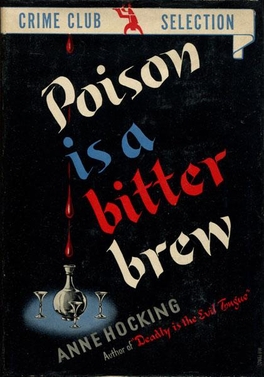
Miss Milverton is a 1941 mystery crime novel by the British author Anne Hocking. First published in London by Geoffrey Bles, it was the third in her series featuring Chief Inspector William Austen as part of the Golden Age of Detective Fiction. It was published in the United States in 1942 by Doubleday under the alternative title Poison is a Bitter Brew.

The Vultures Gather is a 1945 mystery detective novel by the British writer Anne Hocking. It was published in London by Geoffrey Bles. Written during the Golden Age of Detective Fiction, it is the seventh in her series featuring Chief Superintendent William Austen of Scotland Yard.
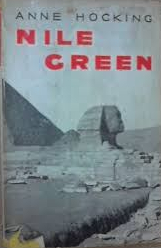
Nile Green is a 1943 mystery detective novel by the British writer Anne Hocking. Written during the Golden Age of Detective Fiction, it is the fifth in her long-running series featuring Chief Superintendent William Austen of Scotland Yard. It was published in the United States by Doubleday under the alternative title Death Loves a Shining Mark.

One Shall Be Taken is a 1942 detective novel by the British writer Anne Hocking. It was published in London by Geoffrey Bles. Written during the Golden Age of Detective Fiction, it is the fourth entry in her series featuring Chief Superintendent William Austen of Scotland Yard.

Death Disturbs Mr. Jefferson is a 1950 mystery detective novel by the British writer Anne Hocking. It was the eleventh entry in her series featuring Chief Inspector William Austen of Scotland Yard, one of the many investigators during the Golden Age of Detective Fiction.It was published in the United States by Doubleday.

Mediterranean Murder is a 1951 mystery detective novel by the British writer Anne Hocking. Written during the Golden Age of Detective Fiction, it was the twelth entry in her series featuring Chief Inspector William Austen of Scotland Yard. It was published in the United States by Doubleday under the alternative title Killing Kin.



















